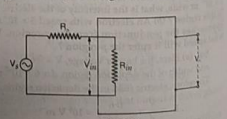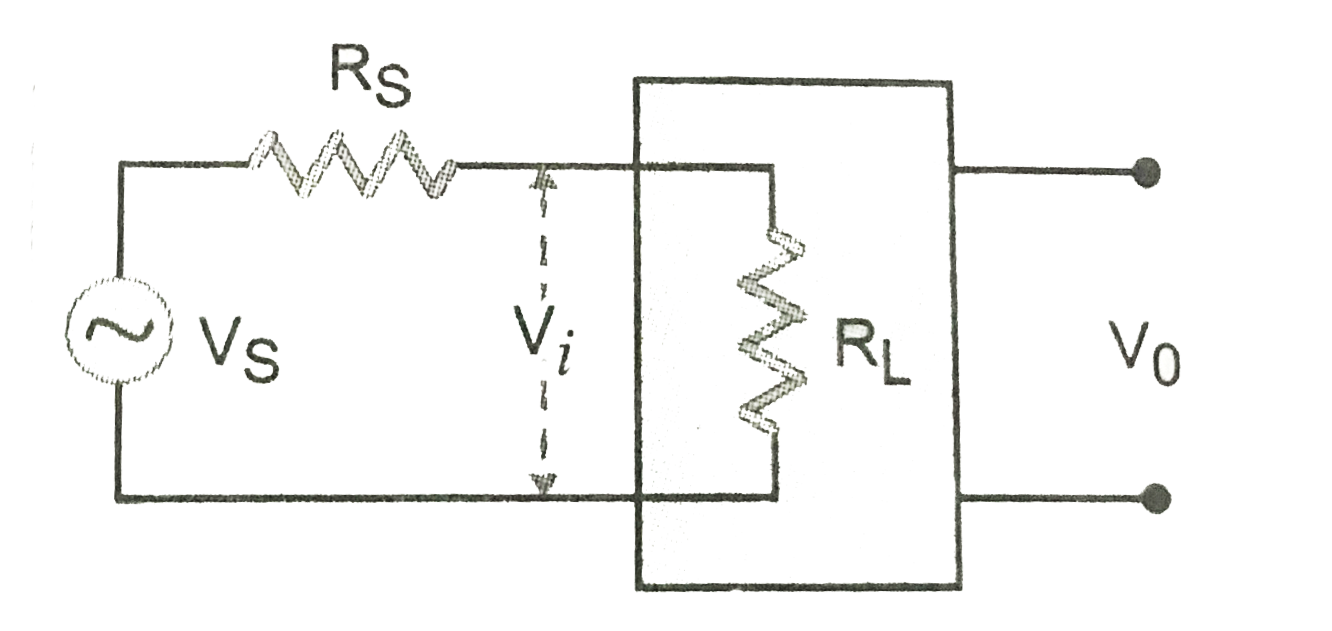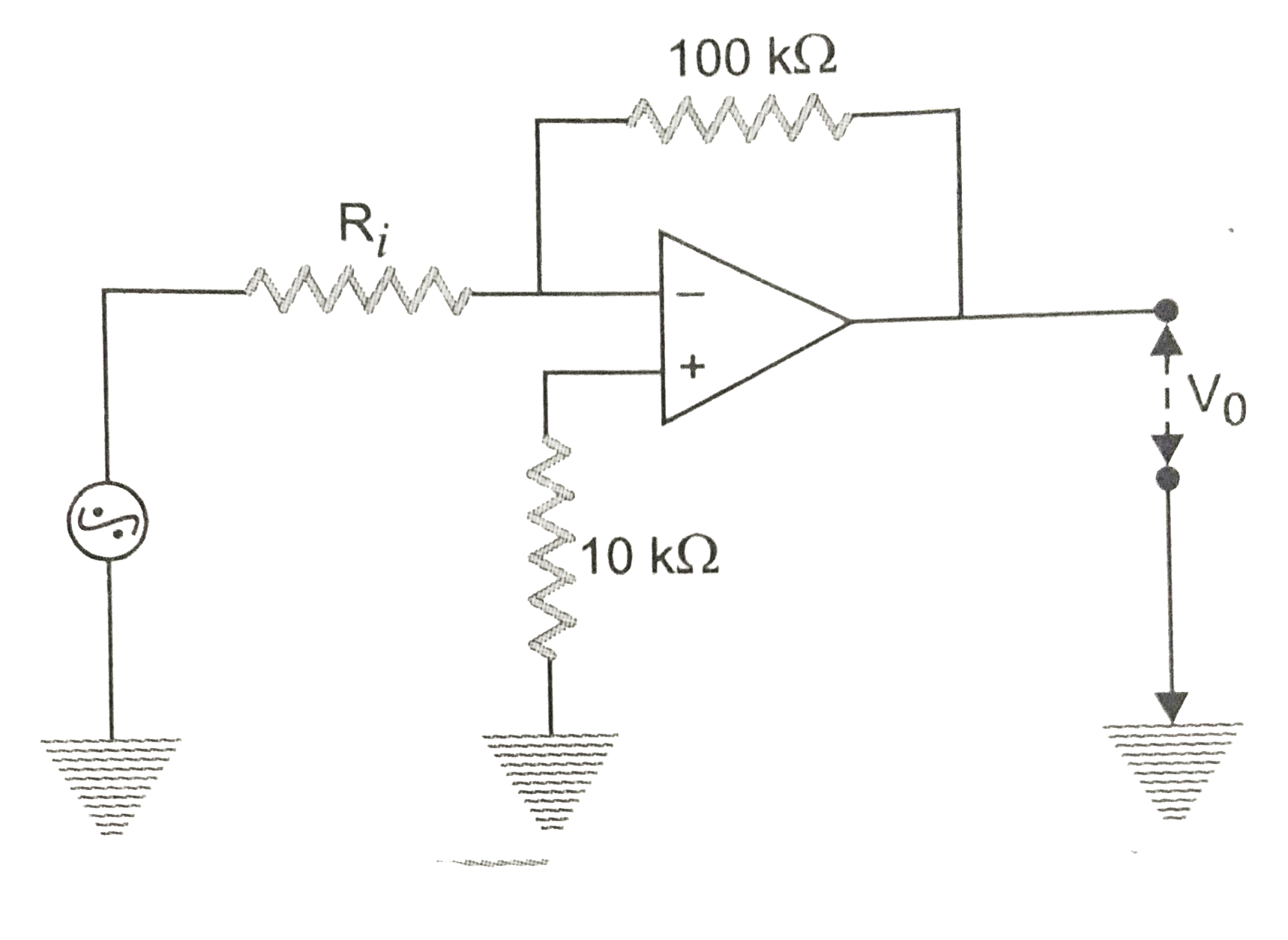An amplifier is represented by the circuit shown in Fig. Here ri is the input resistance of the amplifier and the voltage Vi is appearing across it. This voltage is amplified by a factor AV and appears across the load as voltageV0
An external voltage V_(s) is applied at the input terminals of the amplifier via series resistance R_(S). What will be the apparent gain AV(=V0/Vs) of the ampilifier in terms of AV,RSandri.
 Solution in Punjabi
Solution in Punjabi
Step by step video & image solution for An amplifier is represented by the circuit shown in Fig. Here r_(i) is the input resistance of the amplifier and the voltage V_(i) is appearing across it. This voltage is amplified by a factor A_(V) and appears across the load as voltage V_(0) An external voltage V_(s) is applied at the input terminals of the amplifier via series resistance R_(S). What will be the apparent gain A_(V)(=V_(0)//V_(s)) of the ampilifier in terms of A_(V), R_(S) and r_(i). by Physics experts to help you in doubts & scoring excellent marks in Class 12 exams.
Updated on:21/07/2023Topper's Solved these Questions
Similar Questions
Explain the two processes involved in the formation of a p-n junciton diode. Hence defien the term"barrier potential".
View SolutionExplain the phenomenon of refraction at a plane surface separating two transparent media and show that μ=c/v where letters have their usual meanings.
View SolutionExplain the formation of energy bands in solids and hence define conduction band and valence band.
View SolutionAn input voltage V_(i) of 0.20 V is applied to an operational amplifier connected as shown in the diagram. What is the output voltage V_(0) ?
View SolutionAn amplifier has a voltage gain A_(V)=1000 . The voltage gain in dB is
View SolutionAn amplifier has a voltage gain AV=1000. The voltage gain in dB is
View SolutionAn amplifier is represented by the circuit shown in Fig. Here ri is the input resistance of the amplifier and the voltage Vi is appearing across it. This voltage is amplified by a factor AV and appears across the load as voltage V0

An external voltage Vs is applied at the input terminals of the amplifier via series resistance RS. What will be the apparent gain AV(=V0/Vs) of the ampilifier in terms of AV,RS and ri.
View SolutionAn amplifier is represented by the circuit as shown in Fig. with an input internal resistance r_(i)=100Omega . It is connected to an a.c. voltage source through a series resistance of 300Omega . The no load voltage gain of transistor is 400. What is the apparent gain of the amplifier?
View SolutionThe voltage gain of the following amplifier Fig. is 200. The value of input resistance Ri is

View SolutionAn amplifier is represented by the adjoining circuit . r_(i) is the input resistance of the amplifier and the voltage v_(i) is appearing across it. This voltage is amplified by a factor of A_(v) and apears across the load as voltage v_(0) .
View SolutionFig represents an amplifier circuit with an input internal resistance ri=50kΩ. It is connected to an ac voltage source through a series resistor of 100kΩ. The no load voltage gain of the transistor is 100. What is the apparent gain of the amplifier?
View SolutionIn the circuit, shown in fig v_(s)=0.2V, v_(0)=-10V . Find v_(i) and gain A_(v)=v_(0)//v_(i) and A_(v)^(')=v_(0)/v_(s) ?
View SolutionAs shown in fig an amplifier of no load gain 400 and input resistance 100Ω is connected to external signal via a series resistance of 300Ω. What is the apparent voltage gain?
View SolutionIn the circuit shown in figure, when the input voltage of the base resistance is 10 V, Vbe is zero and Vce is also zero. Then

View SolutionFor a transistor amplifier, the collecor load resistance RL=2k ohm and the input resistance Ri=1kohm . If the current gain is 50, calculate voltage gain of the amplifier.
View SolutionIn an L-C-R circuit, if V is the effective value of the applied voltage V_(R) is the voltage across R, V_(L) is the effective voltage across L, V_(C) is the effective voltage across C, then
View Solution
